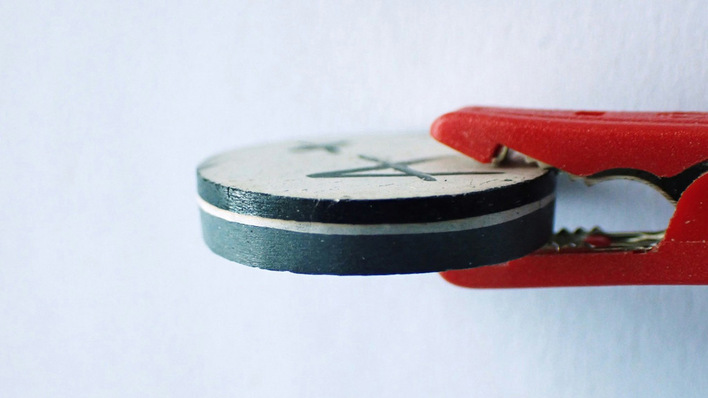There is one major mistake that was made in photovoltaics that the storage industry has not repeated: Energy storage units were put on the market with Internet connectivity and remote monitoring right from the word go. In fact, there are very few storage units out there, which cannot be controlled via a data logger.
This helps in troubleshooting. But it also helps in verifying the efficiency of the batteries: Manufacturers advertise the high efficiency and cycle numbers, which either cannot be achieved under real life conditions, or are irrelevant if the unit is to be run economically.
Tens of thousands of test cases in the field
Thus, for installing companies and their customers, every newly installed storage unit is a test case, whether the systems deliver what their manufacturers promise. A policy of total honesty also helps the installing companies when it comes to sales. “The manufacturers like to quote the efficiency on their data sheets as being 98 percent,” Kai-Philipp Kairies states, mentioning one example. The Aachen researcher is an expert, as he monitors 20 domestic storage units all over Germany. The research project is running until the summer, with the final evaluation due in July.
After all, for the actual efficiency of a storage unit under everyday conditions, the maximum efficiency has very little relevance. “You can expect to achieve it maybe three days per year,” Kairies judges.
Between 200 and 250 cycles per year
At every unit, the researchers take a total of 64 measurements. Every day, they are processing 120 million data points, which already hint at some first results. Concerning charging cycles: “The majority of the systems that we assess are between 200 and 250 cycles per year,” Kairies explains. “Very small units – around two kilowatt hours connected to six kilowatts of PV – can achieve 300 to 320 charging cycles. Very large ones have 150 cycles, but I have not seen anything like 100 cycles.”
With the households that were selected to take part in the study, very different load profiles were detected. “The sample includes a two-person household which has a consumption of eight megawatt hours per year,” he says. “These are architects that use powerful IT hardware, printers and plotters. We have some households that drive electric cars. And we have a wholly new constellation: PV, storage units and a model railway set which also uses a lot of electricity.”
16 domestic energy storage units undergoing testing
Nina Munzke, researcher at the Karlsruhe Institute of Technology (KIT), also advocates professional monitoring of the operation of storage systems. Since October 2015, the KIT is conducting tests on a total of 16 domestic storage units. The systems were bought in as available on the market. All consist of lithium-ion batteries.
So far, results for nine units are available. Reference for the load date was the VDI 4655: 4,200 kilowatt hours of consumption per year, plus 3.2 kilowatts of rooftop PV and storage units with two to six kilowatt hours of net capacity. “Just the efficiency of the battery varies between 80 and 98 percent,” she explains. “For the efficiency of the entire system we try to take all the losses into account.”
Along with the losses in the battery, there are those of the power electronics (DC converter or battery inverter) and the consumption in standby mode. “Between nominal and partial load, these can be significantly different. Especially the output for charging and discharging have a string influence on losses and thus the efficiency of the system.”
Partial load is much more important than maximum output
The tests have shown that the discharge output for private residences usually stays under one kilowatt. That greater output is called for is rare. When the discharge output is only 500 watts, the efficiency of the different systems can vary by as much as 15 percent.
Losses between charging, storing and discharging are of particular interest. They indicate the quality of the power electronics – battery inverters in AC systems or charging controllers (boost converters, buck converters) in DC systems. Here the efficiency varies between 70 and 90 percent – assuming maximum efficiency. “At partial output, these differences can vary even wider,” Munzke analyses. One thing is already clear, albeit little surprising: The greater the electric output in the system, the less efficient it is.
Standby mode wasting electricity
The issue of electricity consumption to safeguard the system on standby is solved in different ways. “Some systems use almost no power in standby mode, others quite a lot,” Munzke remarks. “The electricity used while on standby either comes from the battery or the grid. That way, the battery discharges even when there is no load on the storage unit.” If the system requires 41 watts, the electricity cost adds up to from two to 61 euros per year, depending on the time in standby mode – that is, if the customer takes his power from the grid.
It is also important how fast the storage unit reacts to demands on the household supply. “Some systems are fast, with the system reacting within one second,” Nina Munzke remarks. “Others take 20 or even up to 70 seconds to come to terms with any new load demand.”
This does not always have to be a disadvantage: Slow units can simply breeze through very short-term load spikes. Overall, slow units are less efficient and because of the losses incurred as part of controlling them, the operational costs can reach up to 40 euros per year.
Taking all the losses into consideration, it is possible to also evaluate storage units in terms of their economic qualities: Good storage units cost 50 euros per year, bad ones more on the order of 200 euros – on top of the investment and installation costs.
Storage units lack in intelligence
Munzke criticises that only 30 percent of storage units have intelligent charging strategies that can protect both the grid from feed-in spikes and the battery from peak loads. Such strategies make sure that the battery is not charged as soon as the solar array generates a surplus, but rather spread the charging over the day so that the storage unit is as full as possible in the evening and last the user through the night.
70 percent of storage unit lack this kind of intelligence. They start charging as soon as the sun shines and the solar panels produce electricity. Of course, it is important that the battery control unit works in concert with the energy management system. After all, it needs to direct the power off the roof to where it is immediately consumed, such as to cool the house in summer or to generate hot water.
Tjarko Tjaden of the Berlin University of Applied Sciences (HTW) suggests using simulations to calculate the efficiency of storage systems. This would be a little like determining the exhaust emissions of a diesel car by using a computer rather than actually putting it to the test. This is also the view set down in the efficiency guidelines of the storage industry, which, however, is more of an academic treatise than a concrete contribution to greater transparency for installing companies and customers. But it is a start.
Make efficiency comparable
Indeed, it would be better to have standardised testing routines that would allow independent institutions to certify the efficiency of specific storage units. These would have to include data from real-life application, which would in turn be a good argument for using the manufacturer’s monitoring data taken from the units of actual customers – anonymised and normalised, it goes without saying.
A good place to start is recording the AC standard efficiency of a storage unit: How much AC power is put in, how much comes out? This can be determined for idealised (loss-free) systems and then compared to the operational data or the simulations of loss-generating operations. This would allow a direct determination of the relative economic advantage in euros of a specific storage unit (savings in power taken from the grid) – even compared to PV without storage. Tjaden calls this new parameter the System Performance Index (SPI).
The real-life efficiency of storage units will continue to be an issue for installing companies, their customers, manufacturers and researchers for a long time yet. This is all based on an uninterrupted operational monitoring of the installed storage batteries. It has to be beneficial that the debate on efficiency and partial load assessments have finally reached the storage industry. (Heiko Schwarzburger)
More useful information about energy storage systems:
Solar panels:
Choose your right solar panels
Electric cars:
Learn about electric cars to make more use of energy storage
Stay informed, get our free newsletter twice a week, register here







